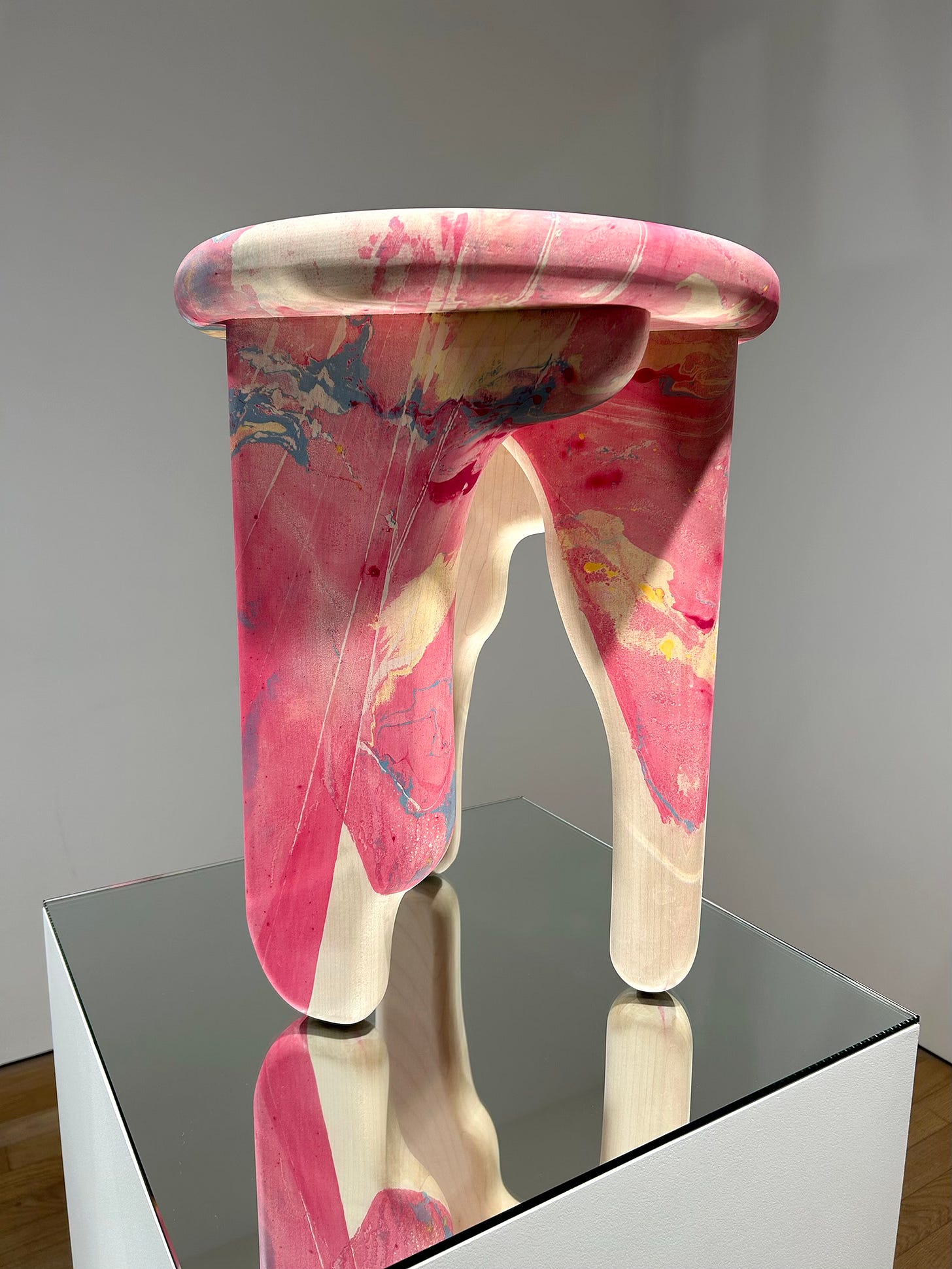Colour Discoveries: London Craft Week 2025
‘Colour Discoveries’ is a new series which shares the innovations I’m tracking within the colour space.
London Craft Week, which took place from 12th to 18th May, was a fantastic event this year. It’s always inspiring to see the new works and meet the talented makers across the city. The 11th edition featured some thought-provoking pieces, and it was interesting to note the connections with other art exhibitions currently running.
This year, I was particularly drawn to the artists exploring inks, both in their application and their sustainable origins. As a long-time admirer of marbling, especially since learning the technique in primary school, I was fascinated to see a novel application in the ‘Tides’ collection. This collaboration between Nat Maks and Brogan Cox of Sebastian Cox showcased marbling on sycamore furniture – a completely new approach. Inspired by nature and the coastal environments of their hometowns, the sycamore tables featured surprisingly vivid colours, and the marbling effect gave them a beautiful watery fluidity. I could certainly envision these pieces in my own home.
Tides: a new collaboration between Brogan Cox and NAT MAKS
I also had a great conversation at the 67 York Street Gallery with textile artist and designer Amélie Crépy, who was presenting her first upholstery collection ‘Chêne’. Her use of black plant-based ink, derived from oak galls – an ancient pigment with roots in the 4th century – really caught my eye. This ink was applied as a hand-applied wash to natural linen, resulting in a lovely rawness in her textile artworks. The organic quality was also present in her furnishing fabrics, which are produced in collaboration with AO Textiles and Gainsborough.
Art work by Amélie Crépy
Adding another interesting layer to the week was the ‘Art for Your Oceans’ exhibition at Sotheby’s. This exhibition and auction, supporting WWF’s marine conservation efforts, brought together a diverse range of works by both emerging and established artists like Antony Gormley and Mona Hatoum. A unique aspect of this project was the use of Ocean Ink, provided by the Scottish company Oceanium. Sotheby’s described this as the, ‘first sustainable, fully biodegradable ink made from regenerative farmed seaweed’. The artists were given blue and gold inks and each interpreted the theme in their own unique way. I found this to be a clever way to highlight the potential of sustainable inks and to engage a new audience within the art world, potentially paving the way for future investment in Oceanium’s innovative algae ink.
Finally, I visited ‘Astonishing Things: The Drawings of Victor Hugo’ at the Royal Academy. After seeing such innovative contemporary ink applications, I felt a desire to explore more historical contexts. The exhibition, featuring paintings and sketchbooks from an original collection of 4,000 artworks, did not disappoint. It was fascinating to see his wide range of subjects and techniques. His striking gothic style, utilising ink blots, washes, stencils, and lace, created a hauntingly abstract feel. I also noted parallels with the ‘Suminagashi’ marbling technique used by Nat Mak.
These discoveries have really fuelled my interest in sustainable ink making, and I’m eager to continue exploring new colour innovations in this area. What stood out to me was the creative approach to non-toxic, low-impact colour sources and the shared enthusiasm for finding new solutions and inspiring the design and manufacturing sectors to adopt more sustainable practices.
What we do
If you’d like to know more about colour intelligence, forecasting and analysis head over to our website at colourcompass.co.uk







